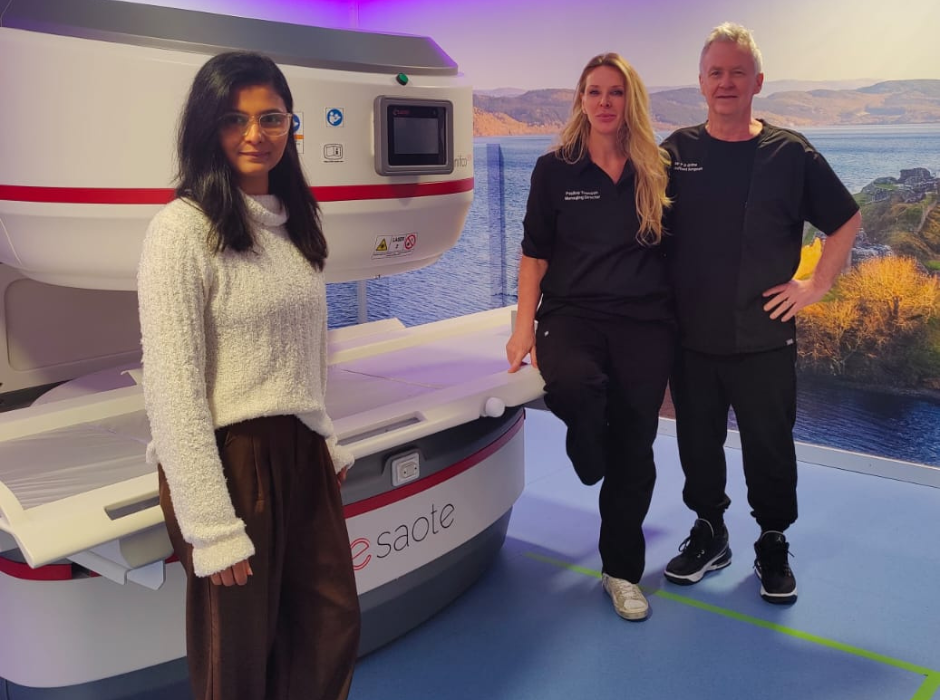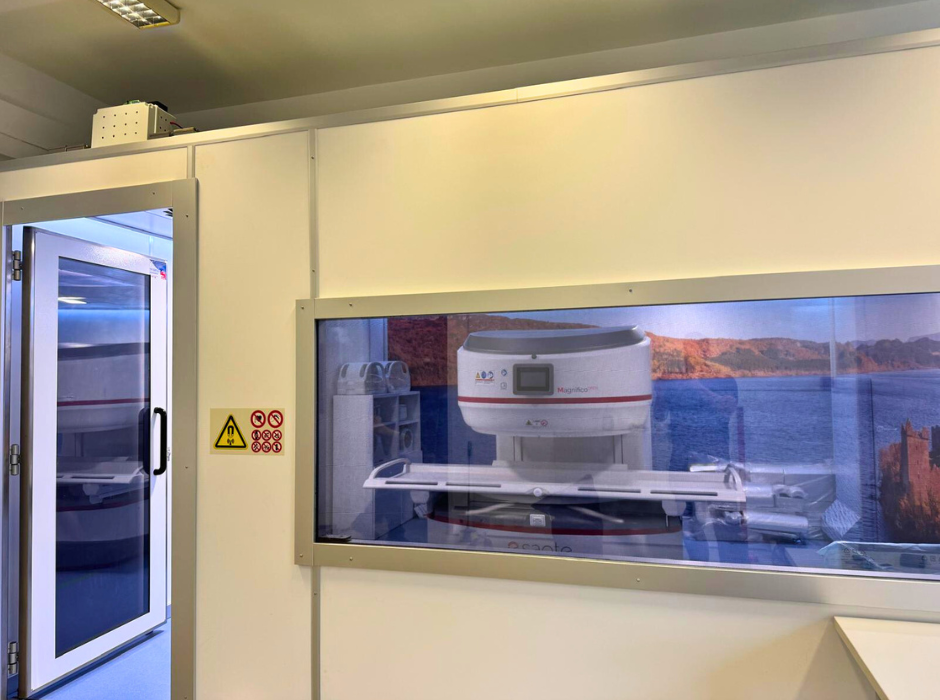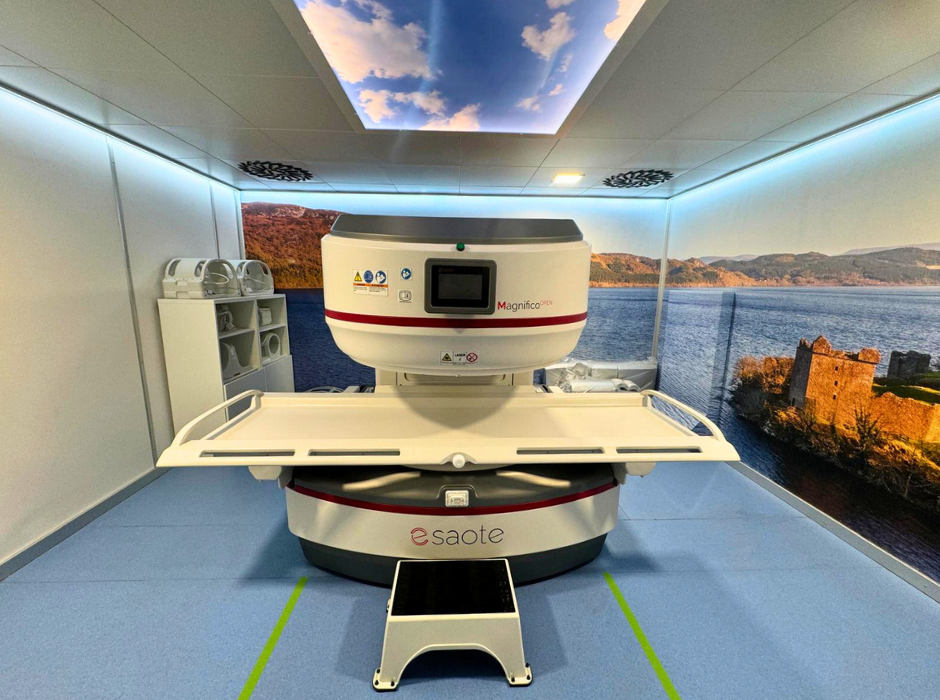
How MRI technology enables democratising access to diagnostics in remote areas
Addressing diagnostic gaps in remote healthcare
For patients across the Scottish Highlands, getting an MRI scan has long meant two things: delays and distance. The NHS facility at Raigmore Hospital in Inverness has traditionally handled most local imaging demands. Still, high volumes and limited capacity have sometimes made access challenging, particularly for patients outside the public system.
“With no private imaging services available locally, our patients often had to travel as far as Aberdeen for a scan, at least two and a half hours away,” explains Dr. Peter Grime, Consultant Surgeon, and Medical Director at Clinic M. “That created real barriers for timely diagnosis and treatment.”
This was not just an inconvenience – it was a barrier to care.
“As a clinician, I rely on accurate, timely imaging to make the right call. Without it, patients wait, pain gets worse, and conditions progress. And that is if they can travel at all,” says Grime. For those with mobility issues, anxiety, or busy caregiving responsibilities, making the trip was not feasible.
The Clinic M team saw an opportunity to introduce an in-house MRI, bringing essential diagnostics closer to the population they serve. “Diagnostics should be cheap, effective, and accessible,” says Grime. “The NHS model manages two out of three at best. We aimed to deliver all three.”
Fitting technology to local needs
To meet their goal of expanding diagnostic services, Clinic M needed an imaging solution tailored not just to physical space but to clinical relevance and patient needs. Their priority was to find a system that could deliver reliable results, fit within an existing structure, and serve the local population effectively.
“The Magnifico Open offered a solution to all our problems,” says Pauline Thomson, Managing Director at Clinic M. “It is open, safe, easy to access, and produces excellent diagnostic images. It is exactly what we needed for a satellite facility like ours.”
The system’s low-field strength aligns with the clinic’s musculoskeletal focus while also simplifying operational complexity. “It enables us to answer key clinical questions efficiently, particularly for MSK cases,” adds Dr. Grime. “And its design makes it accessible for patients who might otherwise struggle with a traditional MRI experience, such as those with claustrophobia or mobility challenges. We can scan people who would otherwise be excluded,” says Grime. “And when the alternative is no imaging at all, that’s a major upgrade in care.”

How Clinic M installed an MRI in a challenging setting
Even with the right technology, bringing MRI to a small private clinic required overcoming logistical and regulatory hurdles. Clinic M is situated in a heritage-listed building on a Highland estate – a beautiful setting but not ideally suited for installing 17-ton medical equipment.
“It was a logistical nightmare,” admits Grime. Walls had to be dismantled and rebuilt with floors lifted and restored. The scanner had to be craned in and winched into place centimetre by centimetre.
The Esaote and logistics teams coordinated every step, from site surveys to RF cage construction to the delicate installation process. “Not a scratch, not a wobble,” Grime recalls. “They pulled off what seemed impossible.”
Once installed, Esaote’s support continued with extensive training and post-installation assistance. “I ran on-site sessions covering everything from basic operation to advanced imaging protocols,” says Bella Chavda, Application Specialist at Esaote. “I stayed in touch for weeks after to fine-tune protocols and answer questions. This kind of ongoing assistance is what makes adoption successful.”
Clinic M sought independent verification to ensure the quality and safety of the service they were building. “We brought in a third-party NHS MRI physicist to review everything,” says Grime. “We had to prove to regulators, colleagues, and ourselves that this was not a vanity project. It is a clinically robust, safe, and effective service. And we succeeded.”
Triangle of care: faster diagnostics, better diagnosis, healthier communities
Today, Clinic M’s MRI service is operational and making a real difference. Patients no longer wait months for scans or travel half a day to be examined. “It has not changed how we deliver care. It has changed how fast we deliver it,” says Thomson. “People get a diagnosis and a treatment plan in days, not weeks or months.” Faster diagnostics mean less stress for patients and their families, who wait with uncertainty for the MRI results.
That speed also means faster recovery, improved patient outcomes, and less time in pain. “From a clinical perspective, it’s transformative,” says Grime. “MRI helps me confirm or rule out conditions early so I can refer or treat with confidence.”
By offering fast, local access to imaging, the clinic has empowered patients. “Our patients are grateful. They finally have educated answers to their health concerns. They are not stuck waiting for a system that may not prioritise their needs. They can act,” according to Thomson.
From a systemic perspective, decentralised imaging helps balance the load. “High-end scanners should be reserved for complex cases,” says Grime. “For common MSK imaging, a local low-field MRI does the job. That frees up NHS capacity and shortens wait times across the board.”
The clinic currently scans 7–10 patients per week to cover costs – a significant investment with no quick return. But for Thomson and Grime, the value goes beyond the bottom line. “This was never about profit,” Grime insists. “It was about improving access. And we are already seeing the benefits.”

Innovative and inclusive healthcare requires smart technologies
Clinic M’s experience demonstrates how the right technology, applied to a clearly defined healthcare need, can transform access to diagnostics. With a compact, cost-effective MRI system and strong implementation support, a rural clinic has reshaped imaging availability across an entire region.
“Diagnostics shouldn’t be decentralised just for the sake of it,” says Dr. Grime. “There must be real added value for the health economy. When you strategically place the right equipment in the right context, you improve efficiency across the system.”
For Pauline Thomson, the impact is measured in gratitude. “Feedback from patients is sincere and simple: thank you. They are grateful for answers, grateful to move forward. That is what we have enabled: informed choice and real control over one’s health” From the technology provider’s perspective, success is reflected in high-quality scans, confident clinical use, and plans to expand services based on growing demand. “When a clinic not only adopts the system but integrates it into long-term plans and considers expanding services, that’s how we know it’s working,” says Esaote’s Bella Chavda.
Healthcare meets the expectations of patients and their families when innovation is backed by commitment, and technology is designed to meet people where they are.
Artur Olesch, Digital Health Journalist, Founder & Editor-in-Chief
aboutdigitalhealth.com
